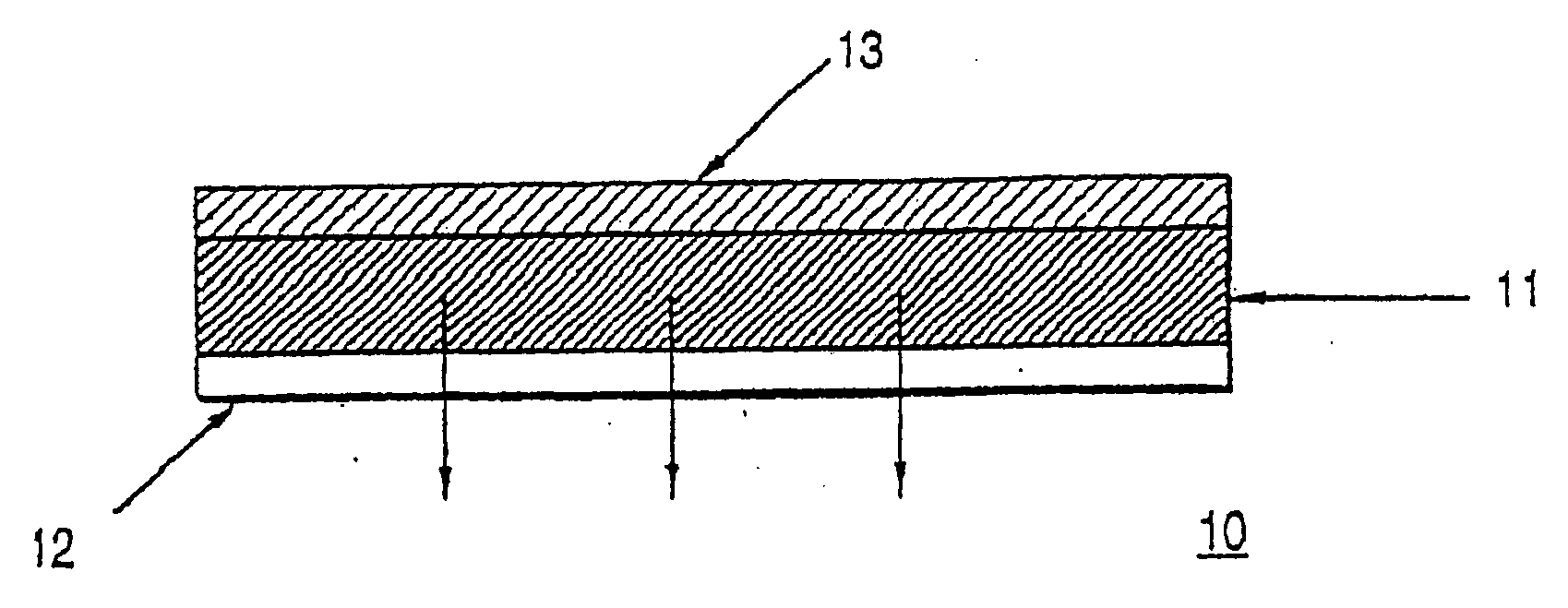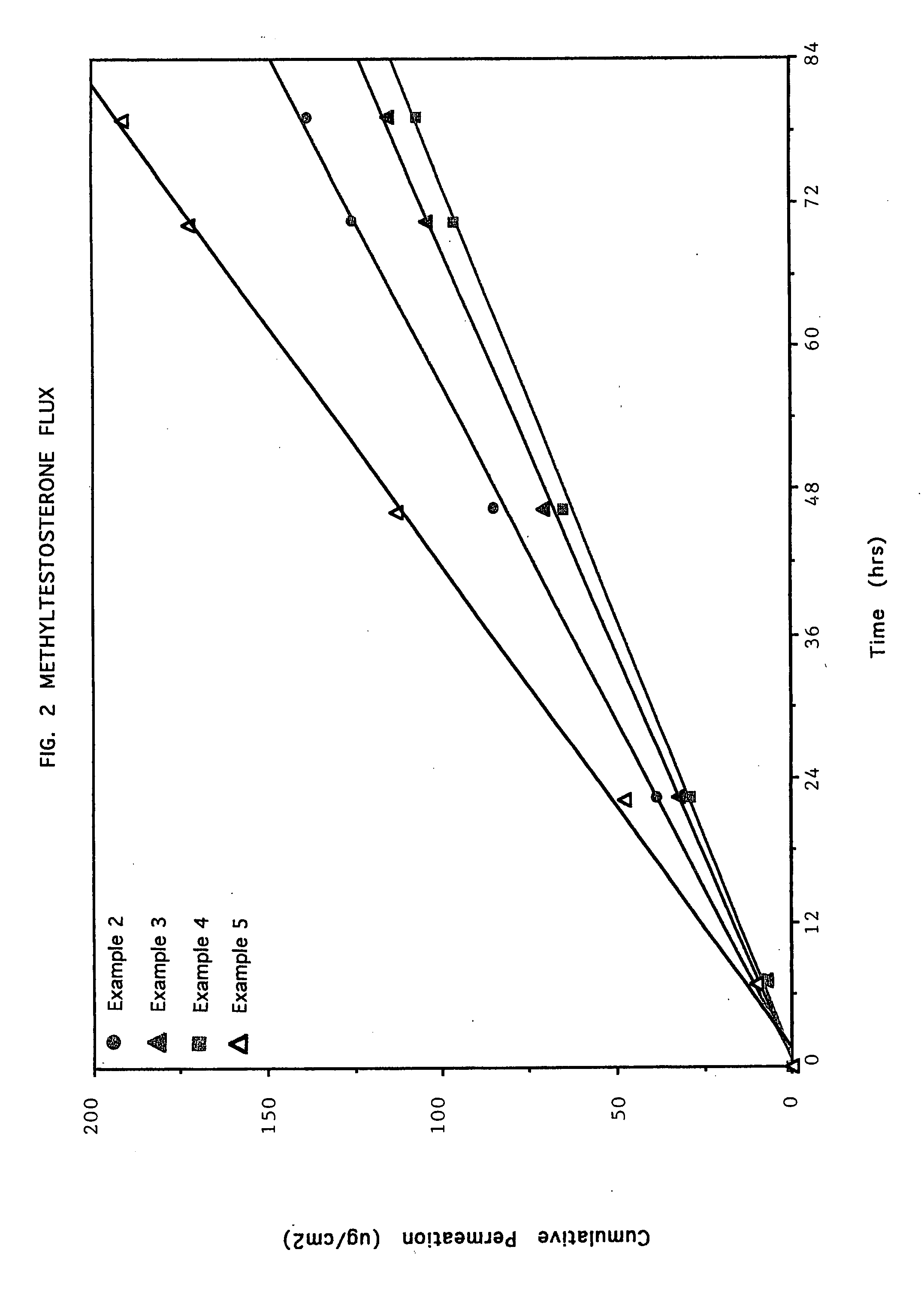Crystallization inhibition of drugs in transdermal drug delivery systems and methods of use
a technology of drug delivery system and crystallization inhibition, which is applied in the direction of biocide, plant growth regulator, pharmaceutical non-active ingredients, etc., can solve the problems of limiting the therapeutic application of transdermal system, affecting the solubility and stabilization of active agents, and further affecting the formulation of transdermal system, etc., to achieve the effect of reducing or preventing the crystallization of active agents incorporated, good physical adhesive properties, and increasing the solubility and stabil
- Summary
- Abstract
- Description
- Claims
- Application Information
AI Technical Summary
Benefits of technology
Problems solved by technology
Method used
Image
Examples
example 1
[0106] A methyltestosterone pressure-sensitive adhesive mixture was prepared by combining 37.3 parts of a polysiloxane adhesive (BIO-PSA® Q7-4603, a silicone pressure-sensitive adhesive in toluene; Dow Corning Corporation, Medical Products, Midland, Mich.), 2.3 parts of methyltestosterone, 6.1 parts polyvinylpyrrolidone (KOLLIDON® 30), 8.6 parts pentaerythritol ester of wood rosin (PENTALYN® A), 5.6 parts of toluene, 2.9 parts of isopropyl alcohol, 3.5 parts of oleic acid, 3.5 parts of dipropylene glycol, and 30.2 parts of a polyacrylate adhesive (GELVA® 3087, an acrylic pressure sensitive adhesive in ethyl acetate; Solutia, Inc., St. Louis, Mo.) were added and thoroughly mixed in an appropriate sized container until the polymer blend was uniform. The resulting composition had the ingredient concentrations on a dry weight basis (i.e. after solvent evaporation of volatile solvents) as shown below.
INGREDIENTWEIGHT %Polysiloxane Adhesive39.0(BIO-PSA ® Q7-4603)Polyacrylate Adhesive20....
examples 2-8
[0107] In the following examples, the method of Example 1 was used with the appropriate amounts of starting materials to yield compositions having the following ingredient concentrations set forth in tabular form in TABLE I.
TABLE IWEIGHT %INGREDIENTEx. 2Ex. 3Ex. 4Ex. 5Ex. 6Ex. 7Ex. 8Polysiloxane40.040.040.040.054.049.044.0Adhesive(BIO-PSA ®Q7-4603)Polyacrylate33.533.523.521.020.020.020.0Adhesive(GELVA ® 3087)Polyvinylpyrrolidone10.0—10.010.010.010.010.0(KOLLIDON ® 30)Wood Rosin Ester—10.010.010.0—5.010.0(PENTALYN ® A)Oleic Acid6.06.06.06.06.06.06.0Dipropylene Glycol8.08.08.08.06.06.06.0Methyltestosterone2.52.52.55.04.04.04.0
[0108] The rate of crystal formation of the active agent in the matrix-type systems of Examples 2, 3 and 4, and 1, 6, 7 and 8 were compared and the appearance of drug crystal formation set forth in tabular form in TABLES II and III, respectively. The observations of crystal formation were done by visual inspection using a microscope having a magnification of 25...
PUM
| Property | Measurement | Unit |
|---|---|---|
| Fraction | aaaaa | aaaaa |
| Fraction | aaaaa | aaaaa |
| Time | aaaaa | aaaaa |
Abstract
Description
Claims
Application Information
 Login to View More
Login to View More - R&D
- Intellectual Property
- Life Sciences
- Materials
- Tech Scout
- Unparalleled Data Quality
- Higher Quality Content
- 60% Fewer Hallucinations
Browse by: Latest US Patents, China's latest patents, Technical Efficacy Thesaurus, Application Domain, Technology Topic, Popular Technical Reports.
© 2025 PatSnap. All rights reserved.Legal|Privacy policy|Modern Slavery Act Transparency Statement|Sitemap|About US| Contact US: help@patsnap.com



